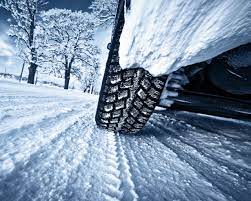Indeed, choosing the proper tire for the right season has an impact on your vehicle’s safe operation, but it also has a financial impact. Because they drive an AWD car or a 4X4 truck, many people underestimate the need of having a winter set of tires and an all-season or summer set. True, those cars are better equipped to handle wet or icy weather, but there are some significant distinctions between the two tires that you would not expect.
A different type of substance. The rubber formula used in winter and summer tires differs, which aids boost performance in the correct conditions. When the temperature drops, each compound hardens naturally; however, winter tires are made of a softer rubber to provide traction in the cold.
Summer tires fail in this situation as they’re too tough to “peck” into the icy conditions to provide adequate traction. Winter tires, on the other hand, aren’t appropriate for summer driving. In hotter weather, its softer rubber wears down quickly, especially at high speeds, and their tread pattern isn’t built for close contact with the road.
Winter tires feature a greater tread depth than summer tires, which allows more room for snow and ice to escape while keeping your wheel closer to the road. On ice, the deeper tread provides substantially better grip. For better performance on dry surfaces, summer tires have a lower tread depth.
Summer tires offer a more simplified tread pattern, with fewer water-clearing grooves. In the summer, this increases the contact patch with the road for better grip and stability. To clear water, snow, and slush, winter tires have deeper blocks with a lot more sips (those thin lines located throughout your pattern). This reduces the likelihood of icy roads and slipping. Snow tires with an expanded zig zag pattern for even greater traction and control in the winter can be taken a step further.
Benefits of having a winter tires as a second set of tires:
- The additional safety provided by a set of winter tires is perhaps the most significant benefit. You’ll be able to stop, turn, and accelerate more smoothly and controllably. Driving in the winter will undoubtedly give you far more peace of mind and confidence.
- Longer life expectancy When each set is only operational for six months of the year, the life lifetime of each set is doubled.
- You will experience a drop in fuel economy if you chose to use winter tires in the summer (although we’re not sure why you would). Because the friction coefficient of a winter tire is significantly higher than that of a summer or all-season tire, the softer rubber helps.
- The value of a vehicle when it comes time to sell it. Buyers will always appreciate a car that comes with a set of winter tires. This could set your vehicle apart from the competition and help you earn some more cash.
- Optional backup If the working set is broken or useless, the off-season set can be used in an emergency. This isn’t a long-term fix because having the incorrect tire in the wrong season isn’t ideal, but it will allow you some time to save up for a new set if necessary.
- In many parts of North America, including British Columbia, winter tires are essential for travel. If you enjoy going to the mountains for skiing, snowshoeing, or other cold-weather activities, having a pair of winter tires will not only make your drive safer, but it will also help you avoid getting a citation.
- When you have two sets of tires, it’s also crucial to think about how you’ll store the off-season set. Tires should be stored out of the elements, away from water, and stacked or laid flat. When they are left upright, they will deform with time, causing the tire to become unsafe for your car.







